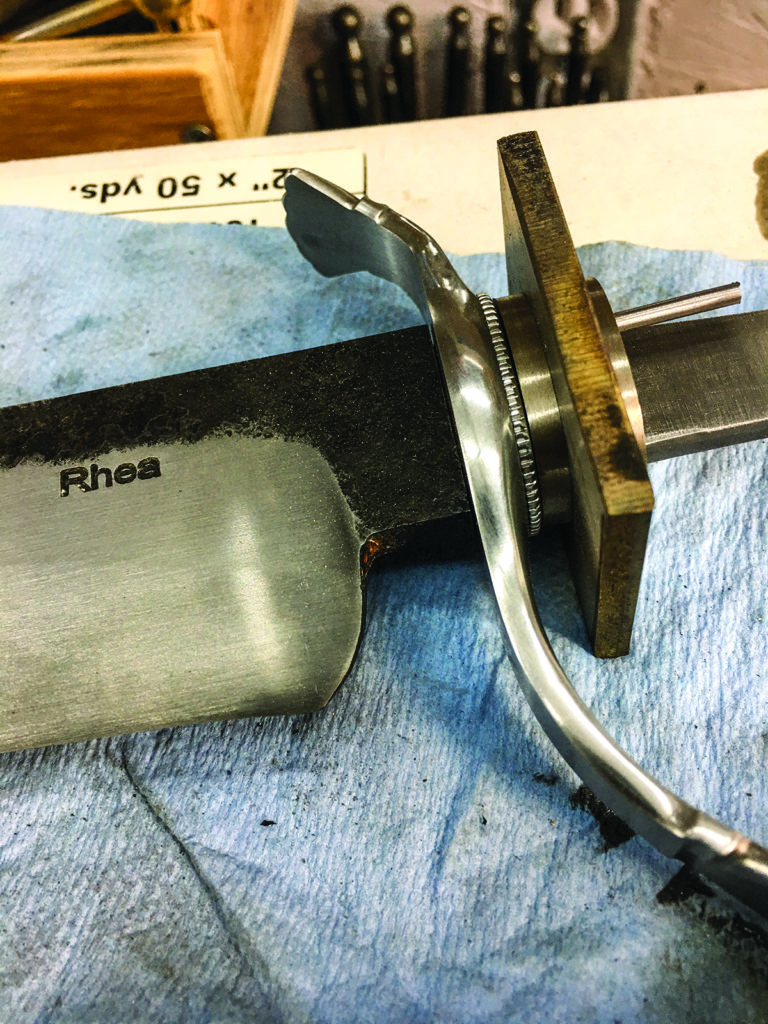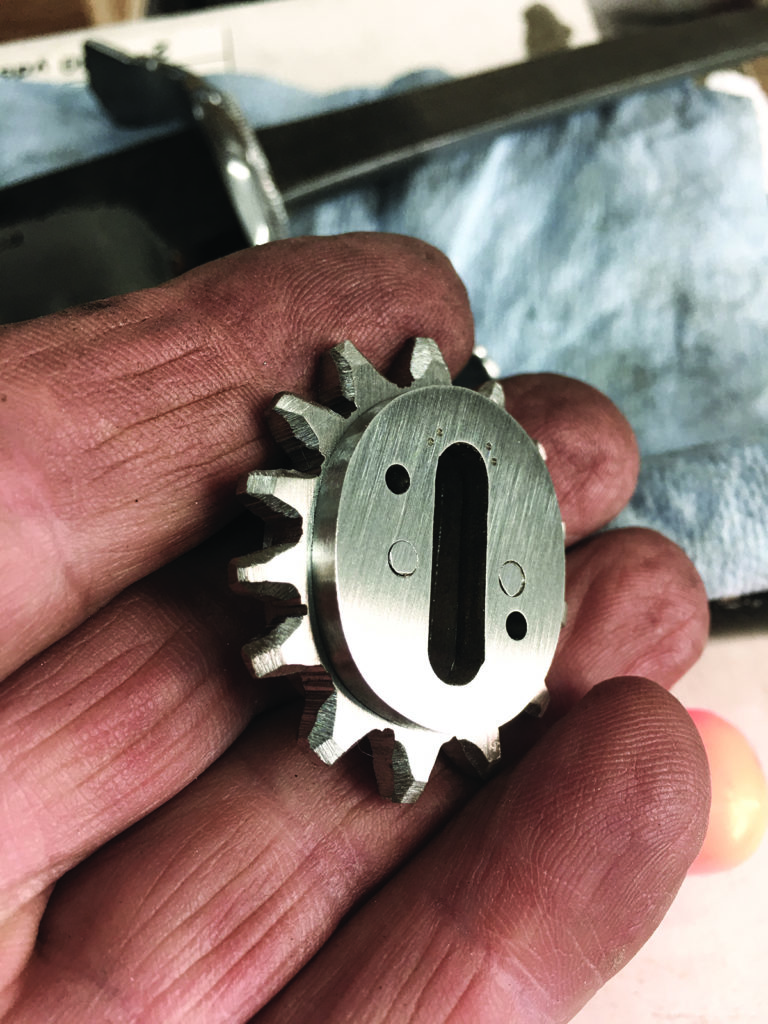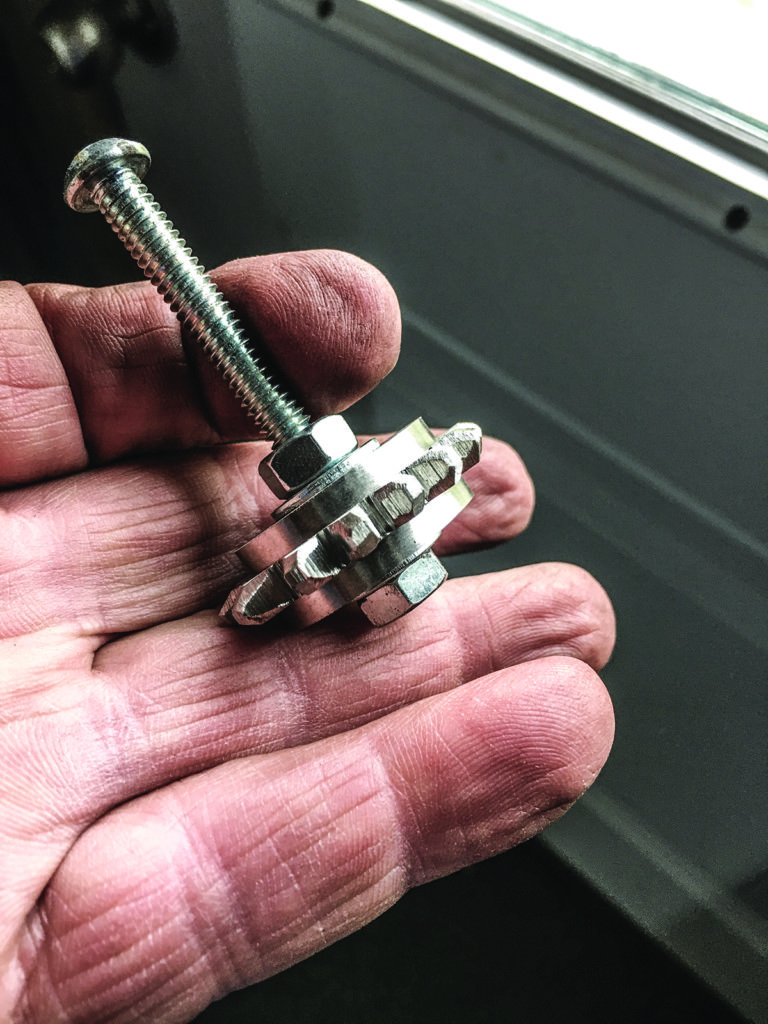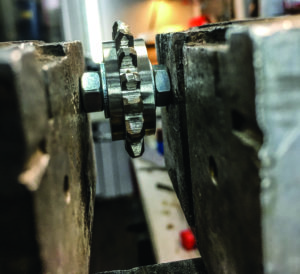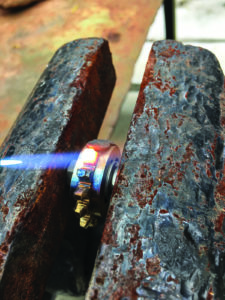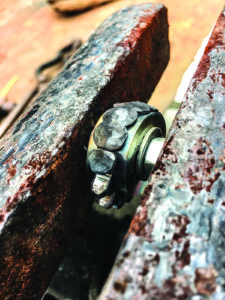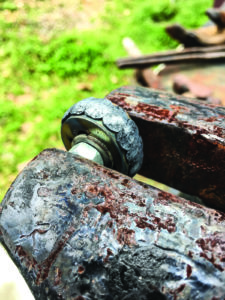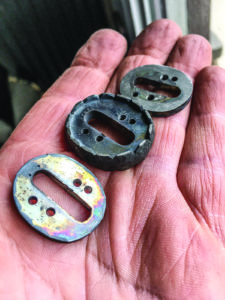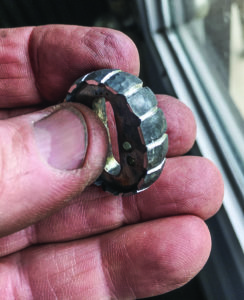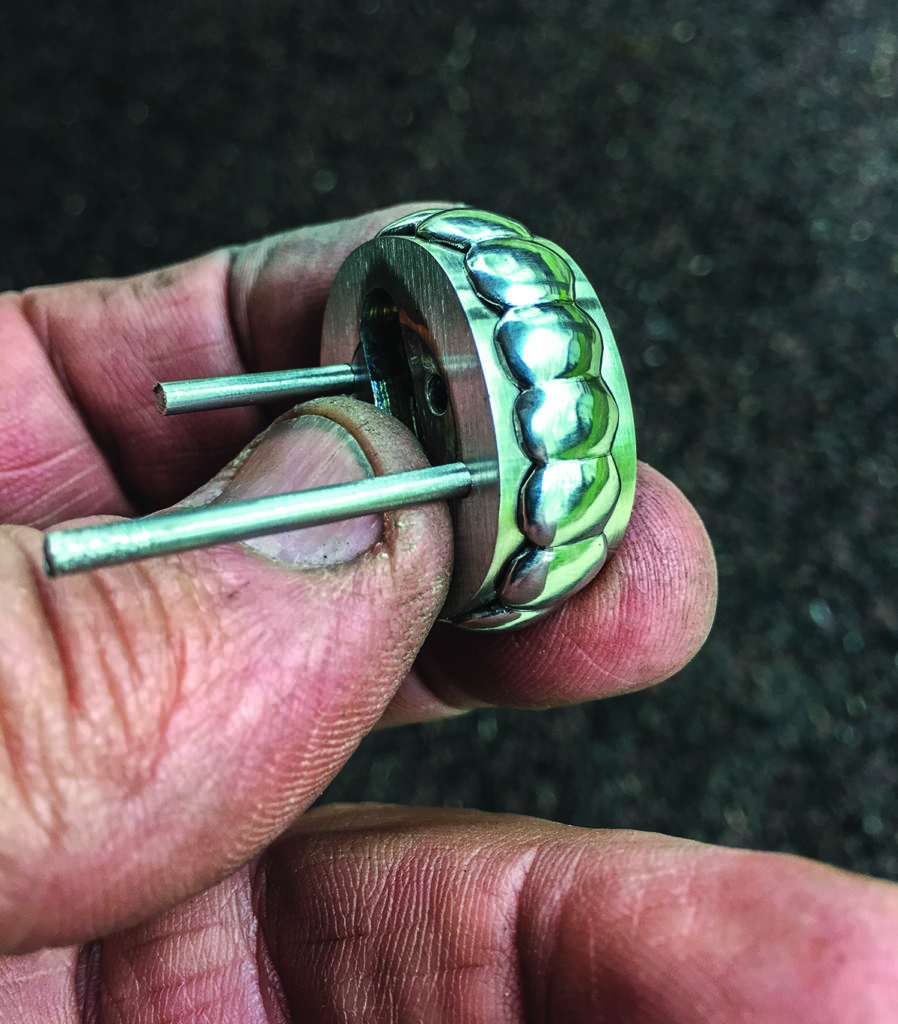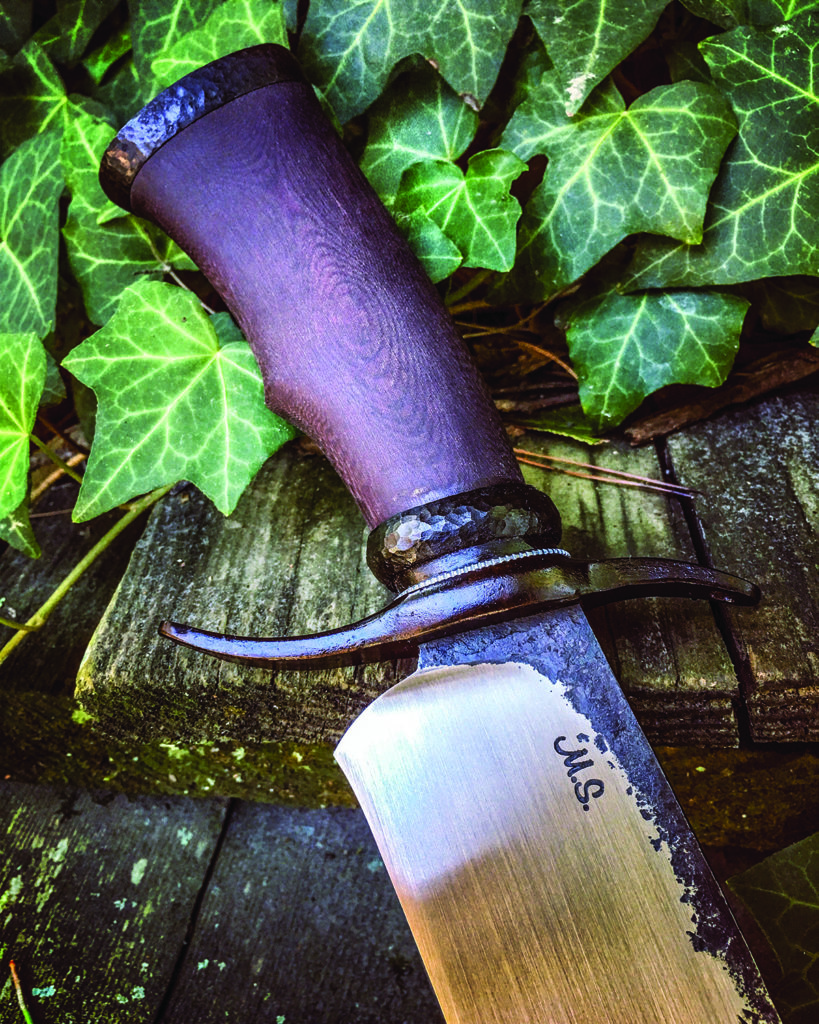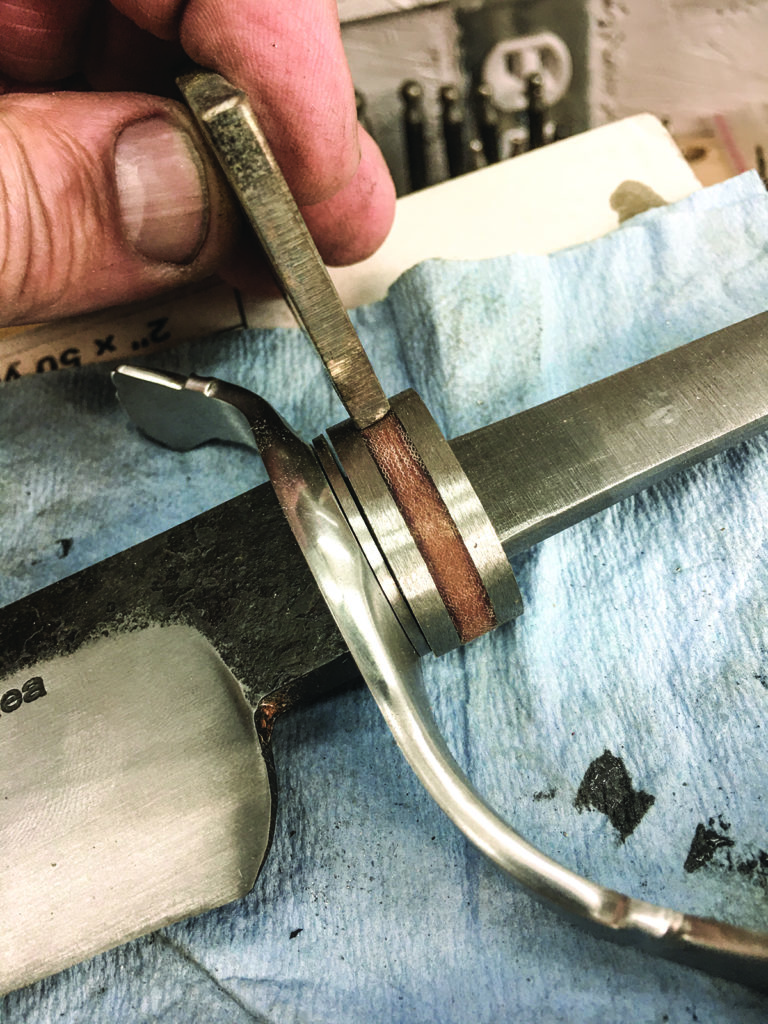
BY LIN RHEA ABS MASTER SMITH
Blending the old with the new sometimes can yield notable results.
It’s been said there’s nothing new under the sun. I might add that new ideas in knifemaking are rare. I do not claim the technique I am about to share is new because that could start the story off on the wrong foot. On the other hand, I will say I have not seen it done in the context of making knife parts. Comparisons can be drawn to particular cultural techniques, and I encourage that in the name of inspiration. Speaking of, that will be the purpose of this discussion—inspiration.
I have been fortunate to have had several sources of inspiration, not the least of which is my time and training in historic blacksmithing. One of the guiding principles of the early blacksmith was practicality. You will end up being the judge as to whether or not this technique is practical or not for your purposes. I will try to show how blending the old with the new sometimes can yield unique results that can be beautiful as well as inspiring.
I call the technique intermediate forging. I chose the name to imply it involves a mixture of old and new techniques within the same process in order to accomplish the task. It can involve forging—the old—as well as the new via the use of modern tools such as grinders, saws, etc. The particular order of the use of the techniques is at your discretion as well. In other words, you may forge, then saw/grind, then forge more before, perhaps, grinding again and finishing or polishing.
Intermediate forging can be used on blades or integral parts of blades. This may be where it is easiest to see and accept the possibility of enlisting the technique. I’m sure you may have seen the need to return to the forge to refine or make corrections in order to improve or actually save a project. It’s often viewed as a concession or acknowledgment of defeat if you must return to the forge for corrections. I now present to you the possibility of pushing aside the puristic view and actually using the intermediate forging technique as part of some projects, and opening up new combinations of techniques for new looks.
The HANDLE SPACERS
One way in particular I have made changes in the look of my knives by intermediate forging is on the handle spacers. The accompanying photos and descriptions pertain to how I set up and mix the techniques of old and new to arrive at a unique process with almost endless possibilities. I show the progression of one project along with a finished photo, and then some other examples of variations of the technique.
I use stainless steel for the spacer, though mild steel or other forgeable materials would work as well. I start with three layers, leaving the middle layer proud by a chosen margin according to my plan. Note: I often “lean” the guard and spacer forward. This creates the need to provide a fake middle spacer that will be discarded after the outside spacers have their inclination established. I then insert the actual middle spacer and leave it proud for the subsequent steps.
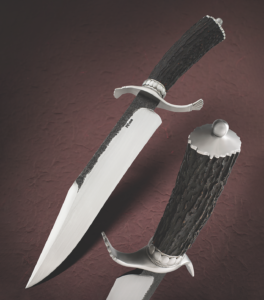
YOU be THE JUDGE
As noted, you must be the judge as to whether intermediate forging is for you. I’ve found that the results are worth the extra effort it takes to accomplish my intent. Also, while steps in this process are examples of workmanship of risk*, the risk is usually limited to an individual part of and not the whole knife. I’ve also found that risk itself adds intrigue to the project, and intrigue attracts the curious. Of course, as with a movie, risk and intrigue are good when the ending can be written with a predictable result. Hence, intermediate forging also needs to have predictable results. I can say that it certainly has for me.
*Workmanship of risk refers to a principle found in the book, The Nature and Art of Workmanship, by David Pye.
For more information, contact Lin Rhea, Dept. BL11, 413 Grant 291020, Prattsville, AR 72129 870-942-6419 [email protected], rheaknives.com.
 NEXT STEP: Download Your Free KNIFE GUIDE Issue of BLADE Magazine
NEXT STEP: Download Your Free KNIFE GUIDE Issue of BLADE Magazine
BLADE’s annual Knife Guide Issue features the newest knives and sharpeners, plus knife and axe reviews, knife sheaths, kit knives and a Knife Industry Directory.Get your FREE digital PDF instant download of the annual Knife Guide. No, really! We will email it to you right now when you subscribe to the BLADE email newsletter.


